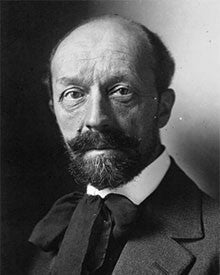
(1869 - 1937)
One of classical music’s most distinguished late-starters Albert Roussel began his career as a sailor before studying music professionally. His final voyage, to south and south-east Asia, was a life-changing experience. After it he obtained extended leave and took harmony lessons with Julien Koszul, resigning his naval commission in 1894 so that he could move on to Paris and study with Eugène Gigout. In his 30th year he entered the Schola Cantorum, stronghold of the Franck tradition and in particular of Vincent d’Indy, where he remained a pupil until 1909, although d’Indy soon had him working as a teacher too. That year, on a late honeymoon with his wife Blanche, whom he had married in 1908, he travelled to India and what was then Indo-China. Once more, for the Great War, he voluntarily joined the services, this time in an artillery regiment, but it was the end of his physical adventures. As his health failed, he settled on the Channel coast near Dieppe, emerging in 1930 to visit a festival in Chicago and attend the premiere, in Boston, of his Koussevitzky-commissioned Third Symphony.
Albert Roussel Composition Timpani and Percussion Requirements
Petite Suite
Timpani + 3 percussion
Clash cymbals, snare drum, triangle, tambourine, castanets, orchestral bass drum
__________________________________________________________________________________
Symphony No 3
Timpani + 5 percussion
Clash cymbals, orchestral bass drum, snare drum, triangle, tambourine, tam tam
__________________________________________________________________________________
